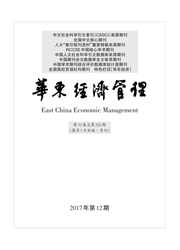

 中文摘要:
中文摘要:
上海具备历史、区位和政策等多方面对外开放的优势条件,外商直接投资在进入长三角的过程中是以上海为中心,逐步向苏南扩散。这种扩散可能导致距离上海越远的苏南城市吸引外商直接投资规模发生衰减。文章构建2002-2015年苏南的面板数据,综合运用静态和动态面板的估计方法,发现苏南城市与上海之间的经济距离变远导致前者全行业外商直接投资减少,这种效应在静态面板估计中不显著,但在动态面板估计中显著。由于制造业外资价值链内部环节空间分离所产生的协调成本,制造业外资从上海向苏南的衰减特征更为显著;而服务业外资从上海向苏南扩散特征不明显,与上海的经济距离变远并未减少苏南的服务业外资流入规模。
 英文摘要:
英文摘要:
Shanghai has prominent advantages of history, location, policy and many other aspects in opening outward. In the process of FDI entering the Yangtze River Delta, FDI takes Shanghai as the center, and gradually extends to southern Jiangsu province. The spread could lead to a decline in foreign direct investment in cities of southern Jiangsu province, which are farther away from Shanghai. This pa- per constructs the panel data of southern Jiangsu from 2002 to 2015, applies the static and dynamic panel estimation methods, and finds that as the economic distance between southern Jiangsu province and Shanghai increases, the scale of FDI tends to decline in the whole in- dustry. This effect is not significant in the static panel estimation, but is significant in the dynamic panel estimation. Due to the coordina- tion costs resulting from the spatial separation of internal parts of the FDI value chain of manufacturing industry, the decline of FDI from Shanghai to southern Jiangsu province is more significant in manufacturing industry. But it is not obvious in service industry, as the dis- tance between southern Jiangsu province and Shanghai increases, the FDI inflow in the service sector does not reduce in scale.
 同期刊论文项目
同期刊论文项目
 同项目期刊论文
同项目期刊论文
 期刊信息
期刊信息
